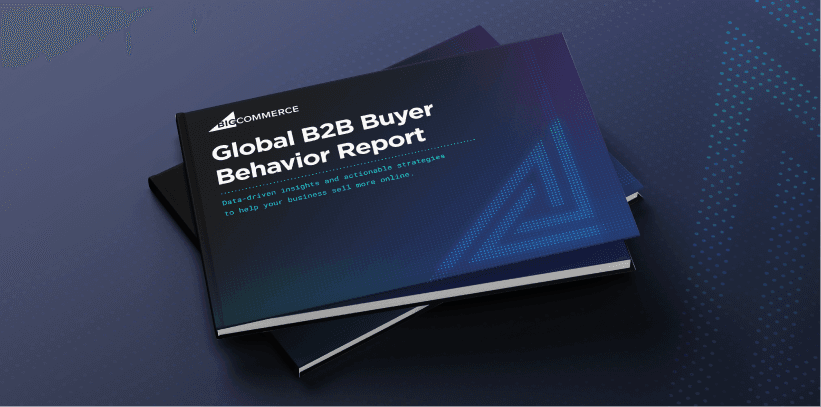Any good website is built on a foundation of sound infrastructure. That goes doubly for ecommerce sites, which frequently introduce highly complex systems and complicated integrations.
You can have the best user experience, the easiest website to navigate, and even leading products. However, that doesn’t matter if the platform doesn’t work. That’s why having a well-planned and executed infrastructure strategy is so important.
IT spending is forecasted to exceed $5 billion annually in 2024. It’s a huge marketplace with thousands of players. Ecommerce businesses should know what they need and what they should consider before going shopping.
The importance of a robust ecommerce infrastructure
A robust ecommerce infrastructure is of paramount importance for the success of any online business. It forms the foundation that supports all of the processes, functionalities, and transactions involved in running an online store.
This may include security, system integrations, scalability, and — perhaps most importantly — uptime and availability. Startups may have small IT footprints with a few software-as-a-service (SaaS) providers. Enterprise retailers such as Amazon have massive commerce infrastructure.
Components of an ecommerce infrastructure
A healthy IT ecosystem is a complicated network of disparate parts working as one. Ecommerce platforms have additional components and APIs that are unique to their business needs.
Web server architecture.
Web servers store data and make it possible for users to access your website. They host websites, manage operating systems, store content, and send data to users. They serve as the backbone of content management systems and the overall customer experience.
Comprehensive shipping and order fulfillment solutions.
These are fairly unique to ecommerce companies. Having a robust shipping and fulfillment solution is difficult and involves integrations with multiple systems. The end result, however, means that products are delivered quickly and sales are completed.
Efficient inventory management systems.
It’s important to know what the business has on hand and when new products need to be ordered — something that realistically can’t be done manually. A well-integrated inventory management system pays for itself by maximizing warehouse and storage costs.
Database management systems.
Ecommerce companies have numerous databases and software applications that can become massive the bigger the company gets. Having a central solution manages, optimizes and retrieves data quickly, and easily keeps sites moving and customers shopping.
Shopping cart systems.
Friction in the shopping cart experience can mean the difference between making a sale and not. Having a quality solution that provides transparency around things such as shipping times and total cost can improve conversion rates.
Secure and scalable payment processing.
Limiting the ways customers can pay reduces the chance of completing a sale. Having a payment service provider that makes it easy to — securely — pay how they wish increases revenue. Any solution should meet industry security standards and be able to scale up during heavy traffic times.
Reliable backup systems.
Backups are an insurance policy. You hope you don’t have to use it, but if you do, you’ll be thankful to have it. Backup solutions protect you in case of malware, ransomware, or even human error.
Replatforming Guide: A Roadmap for Migrating Your Ecommerce Store
Make your ecommerce replatforming project a success with our step-by-step guide filled with best practices from enterprise migration experts.
Common ecommerce infrastructure roadblocks
Building an IT ecosystem is highly complex, not to mention the more unique aspects of ecommerce that bring different challenges. These are common roadblocks that can slow your project:
Integration challenges with other systems.
An ecommerce website is typically integrated with multiple other SaaS systems, from payments to logistics to social media. Sometimes these systems work in harmony together and everything works as they should — and sometimes they don’t.
When this happens, it’s on developers to find workarounds and patches to get everything working as it should.
Scalability issues.
If a site becomes a success and experiences customer and traffic growth, it must have infrastructure that is capable of load balancing to meet that demand. The alternative is an ecommerce website that’s slow, unresponsive, and makes it harder to complete sales.
Security challenges.
Ecommerce security challenges are a critical concern for online businesses, as they involve protecting sensitive customer data and financial transactions.
The evolving nature of cyber threats and the potential consequences of security breaches make it essential for ecommerce platforms to address these challenges effectively through strong firewalls and security standards.
Issues with payment gateways.
Payment gateways that have issues accepting payments only push users to competitors. All gateways should accept multiple forms of payment, meet industry standards of security, and reduce friction in the checkout process.
Complexities of global ecommerce.
Omnichannel selling across borders can be very complicated, with laws and taxes varying from country to country.
Best-in-class payment and logistics solutions can remove some of the challenges, but business owners and leaders still need to have resources fluent in global ecommerce to help shepherd the business through the process.
Supply chain management issues.
Supply chains are highly complex systems, with multiple parts reliant on each other to operate effectively. An issue with one can impact all. If you’re a manufacturer, this goes double. Having an optimized and efficient supply chain is vital.
Safeguarding an ecommerce infrastructure
Cyber attacks are becoming increasingly sophisticated. It’s on company leadership and the information technology team to be proactive and protect systems and data from existing and emerging threats.
Regular system updates.
Especially if a business is using multiple third-party systems, keep them up to date on patches and updates. Ecommerce stores can’t always control the security aspects of these systems, but they can ensure that they are as secure as possible.
Secure payment processing.
All payment gateways should meet Payment Card Industry Data Security Standards (PCI DSS). These policies and procedures are the benchmark for companies that process credit card payments and protect customers and the company against misuse of private information.
Disaster recovery.
While businesses hope that they never have to restore a site or system, an effective disaster recovery function serves as an insurance policy should there be a successful cyber attack.
Maintaining an ecommerce infrastructure
It’s not enough to just build a foundation. Ecommerce infrastructure requires constant updates and maintenance to ensure the site continues to operate efficiently. Having resources, both in-house and outsourcing, is important.
Schedule routine infrastructure checks.
An ecosystem should have end-to-end real-time monitoring to do regular health checkups. If hardware is near failure or two pieces of software aren’t interacting correctly, these checks will catch them before they negatively impact performance.
Necessity of a backup system.
Hope for the best, but be prepared for the worst. Scheduling regular backups will protect web pages in case of emergency.
Maintaining compliance with ecommerce regulations.
Laws and regulations related to ecommerce, payment, and other associated functions are in constant flux. From security to privacy, online stores should ensure that their tech stack meets all pertinent standards.
Managing unexpected downtime.
Downtime is deadly to an ecommerce platform, but it’s something that could happen. Having automation processes in place to react to an emergency will reduce the time the site is down.
The final word
While it may not be as flashy as the customer-facing parts of an ecommerce website, the infrastructure that powers it is just as important.
Being thoughtful and looking years down the road will set ecommerce stores up for success now, while also future-proofing the site.
Significant resources — financial and human — should be spent to set up a healthy and effective IT ecosystem.



